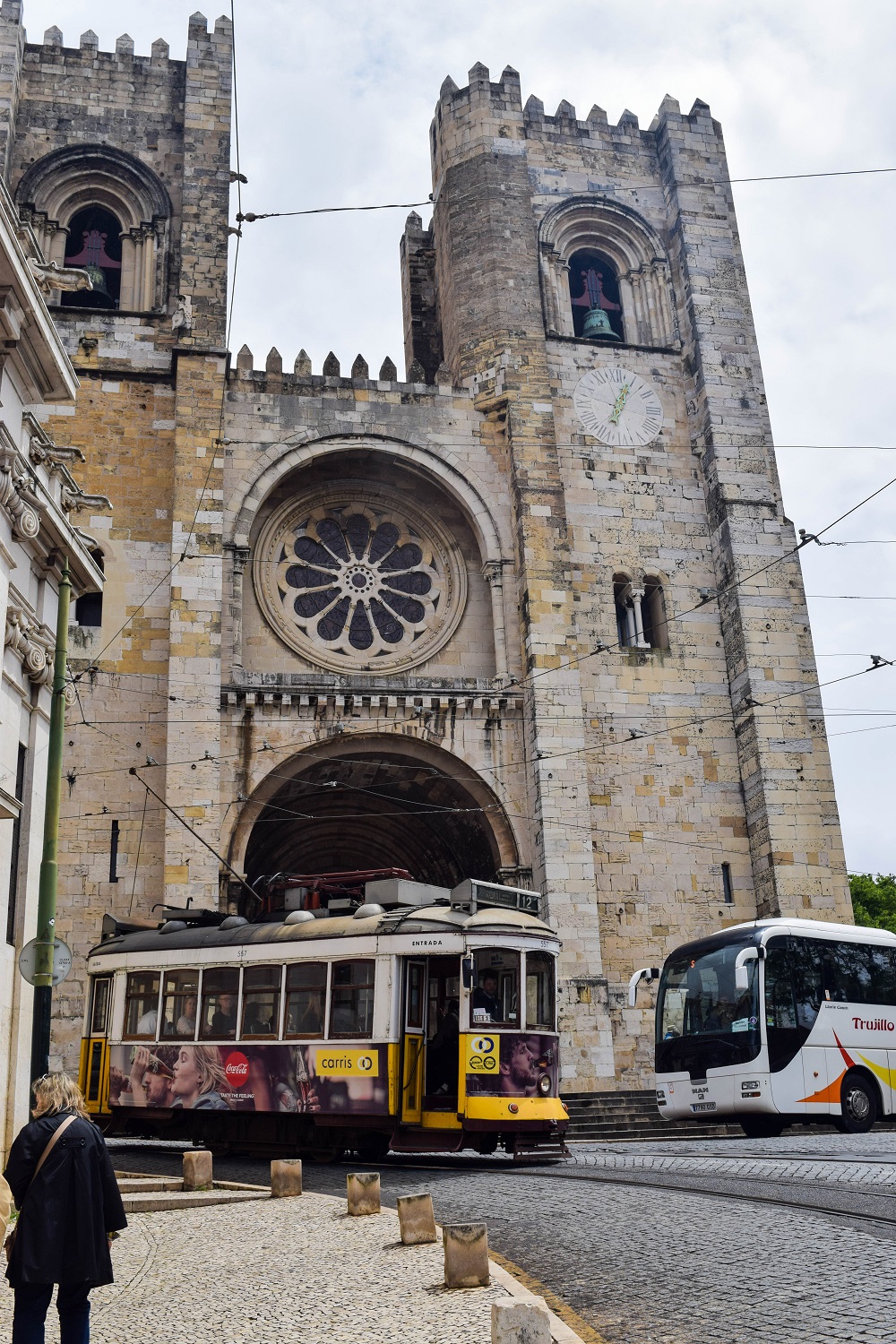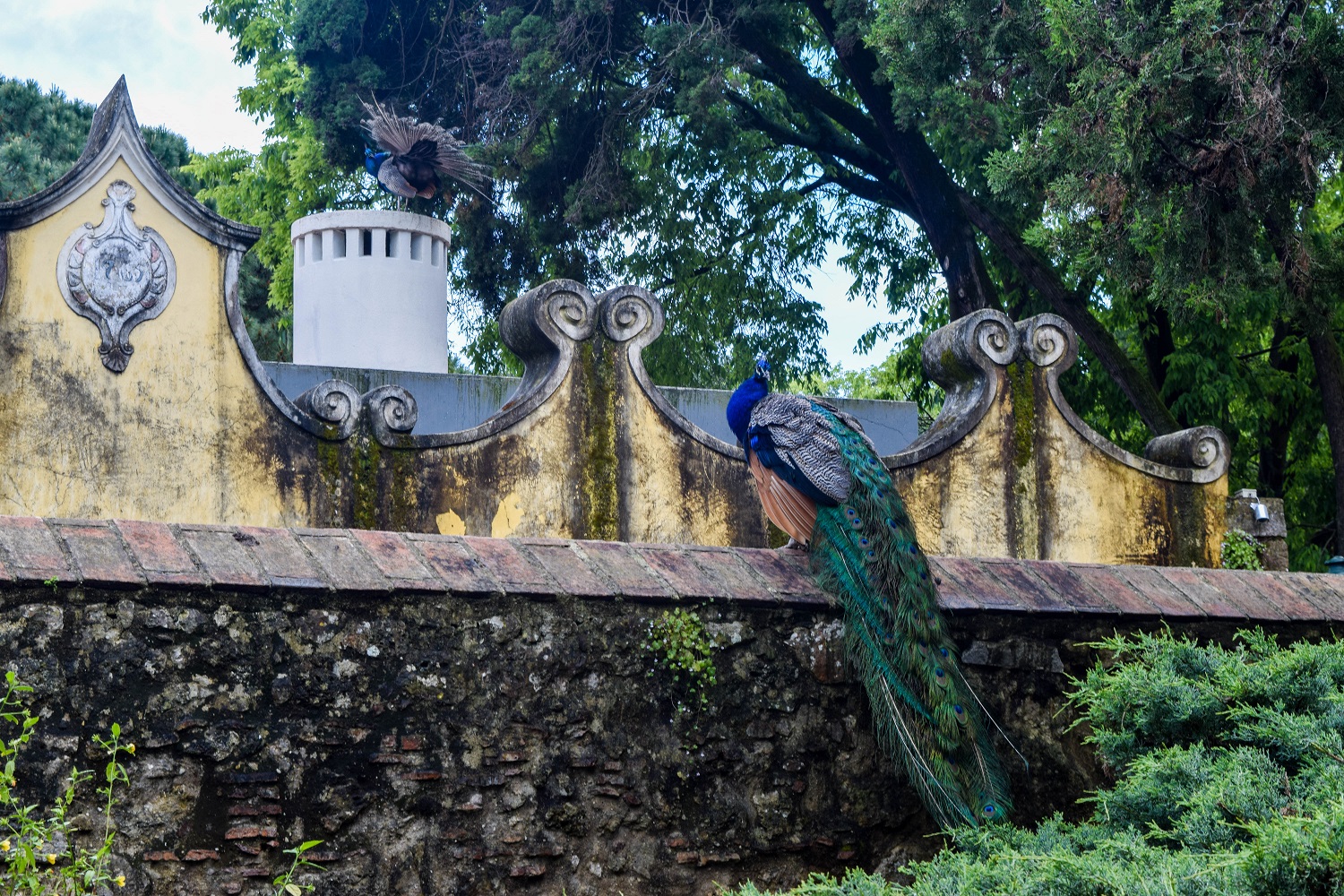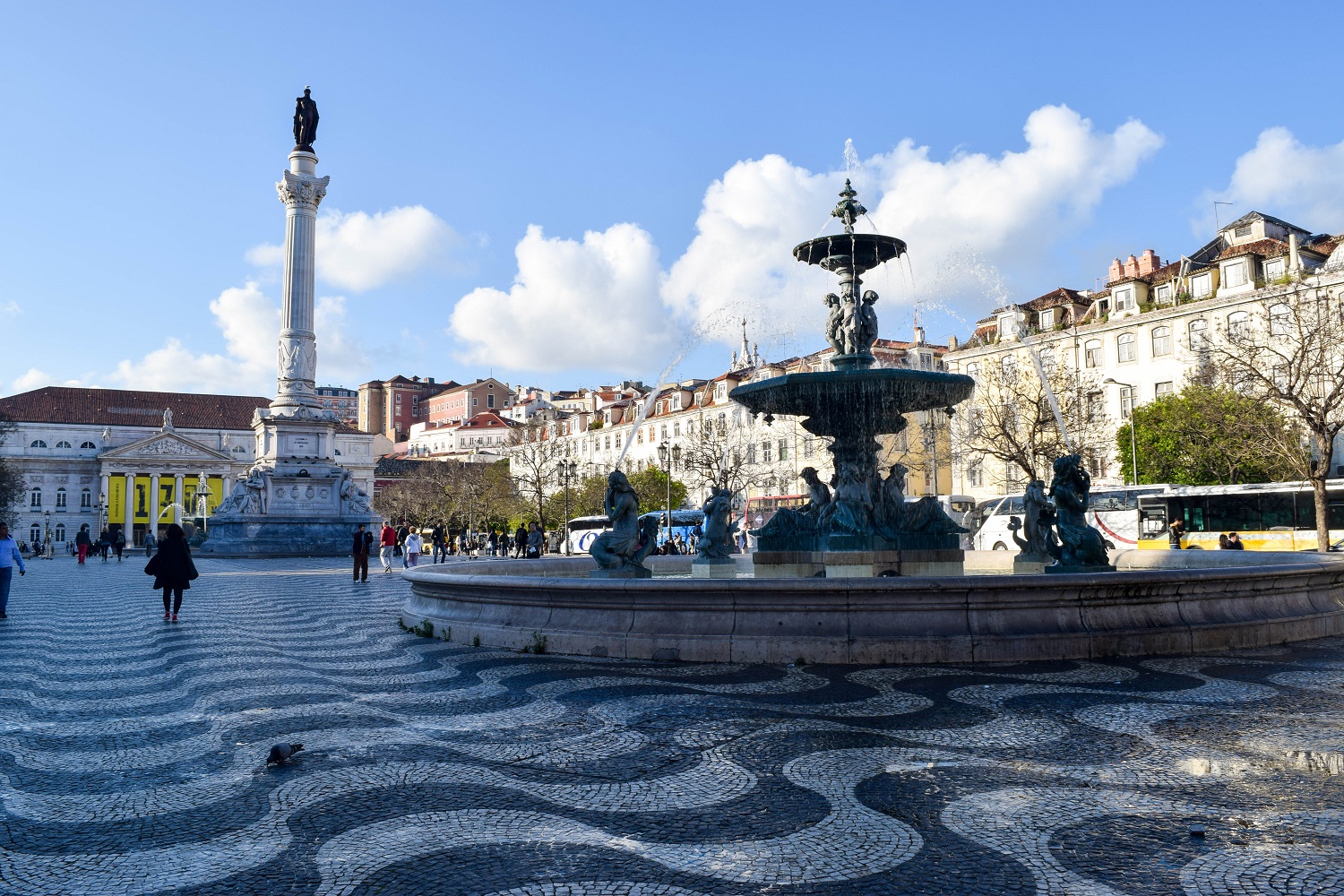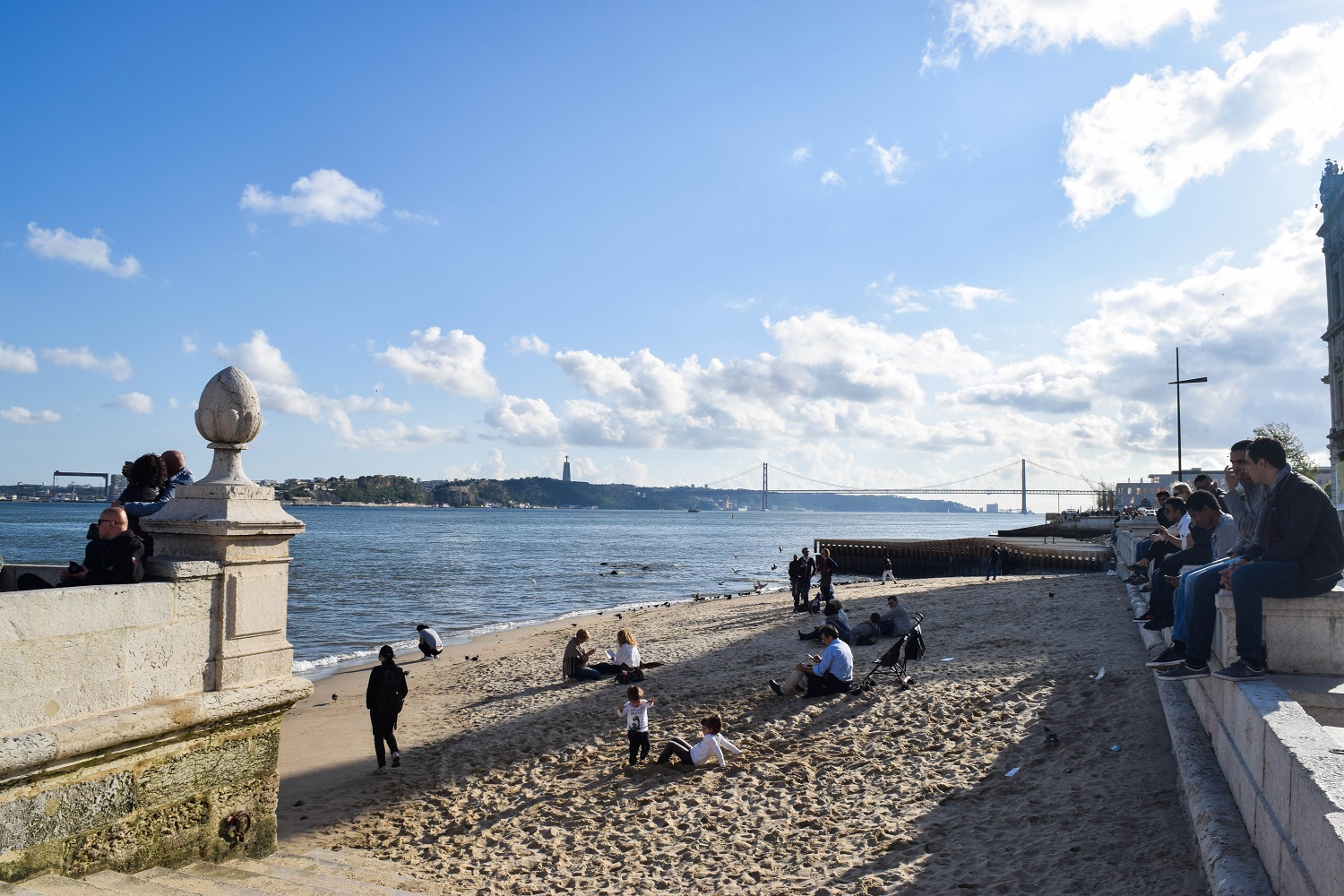I managed to both take my time each day in Lisbon and still see quite a lot. Taking my time meant settling in with a cappuccino and a croissant each morning, watching the city go by, or sipping a glass of Portuguese red wine in the evenings back in my hotel with the balcony doors open and listening to the city sounds below. But I also toured palaces, castles and churches, ate gelato on the banks of the Tejo and took more than enough photos of this incredibly beautiful city.
I was in Portugal for four days, but the second two days I made short afternoon trips to nearby areas to see other sites. But even in those two days where I stayed within Lisbon’s city limits, I am still satisfied that I saw a lot of what Lisbon had to offer and didn’t feel exhausted from trying to do too much.
Igreja de São Domingos
The Church of St. Domingo is a beautiful church near Lisbon’s Rossio Square that bears the scars of Lisbon’s history. The church, built in the 13th century, survived earthquakes – particularly the devastating 1755 earthquake – and fires. While the church was restored after a severe fire in the 20th century, the evidence is still very prevalent on the walls and ceilings.

Sé Catedral
The oldest church in Lisbon, the Sé Catedral, was built in the 12th century, along with the cloisters which were built about a century later and were partially destroyed in the 1755 earthquake. The cloisters are definitely worth the tour, to walk among the ruins with nature beginning to reclaim parts of the walls. And also to walk around the dig taking place in the courtyard. It was really cool to read that artifacts back to the Roman period have been uncovered from this excavation.


Castelo de São Jorge
Want those amazing views of Lisbon, the red roofs and the Rio Tejo? And get those views with a dose of history? The hilltop Castle of St. George is the place to visit.
As a visitor, I wandered through castle ruins and climbed up towers that had seen so much history. While these walls did not go this far back, there are signs of fortifications from the Celts in the 2nd century BC…more than 2,000 years ago! Perched on this Lisbon hill, the site was also used by the Romans, and the bases of these walls were built by the Berbers. It wasn’t until the 12th century that the Portuguese conquered the castle and began rebuilding.


And if you’re lucky, you might also get to see the peacocks roaming around.

Núcleo Arqueológico
Underneath an unassuming building in the city center, visitors can see the bones of Lisbon’s rebuilding through archeological digs. The Núcleo Arqueológico offers tours in the mornings and afternoons and you learn about the past civilizations that made Lisbon home – from a Roman fish factory to the rebuilding of the area after the 1755 earthquake – and walk through the remains of the excavations.

Praça do Rossio
Rossio Square also comes up as Praça de D. Pedro IV, and contains an equestrian statue of King Pedro IV. But what is really amazing here? The cobblestone work. Black and white stones undulate in a wave-like pattern so that when you look at it, you’re looking at Portugal’s maritime history. All around Lisbon there was this amazing stonework on the walkways. And anchoring the square are two fountains on either side, making for a beautiful picture or – with the wind blowing just right – a little bit of coolness on a hot day.

This square was pretty much a central point for me, and I seemed to find my way back here before exploring another winding street. My hotel was also very nearby, right behind the theatre at one end of the square. And not to mention the train station from which I traveled to Sintra.
Praça do Comércio
I spent quite a bit of time at the Praça do Comércio, the site of the former palace. It is a wide, open square where events are held (I saw one set up on my last day), restaurants with gorgeous sidewalk tables, bright yellow buildings wrapping around the square and all of it opening up to the Rio Tejo. The statue in the center is of King Jose I.

Visiting this square quickly became my favorite way to end the day. One day I ate at one of the cafes right on the square, and had the most delicious roasted octopus with a Portuguese white wine (not to mention the appetizer I enjoyed of Portuguese olive oil, bread and olives). And on other days when I ate elsewhere in Lisbon, usually nearby on the Rua Augusta, I bought gelato for dessert and enjoyed it along the banks of the river where I was definitely not the only one taking in the water, the sunset and the beauty that is Lisbon.




